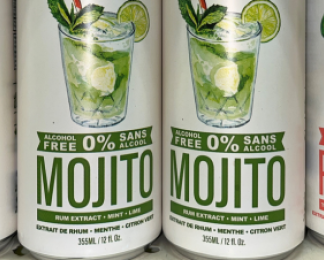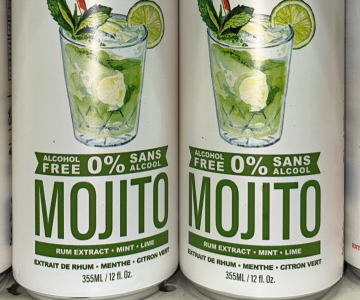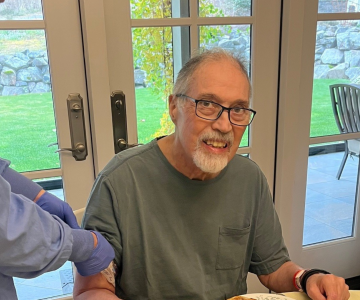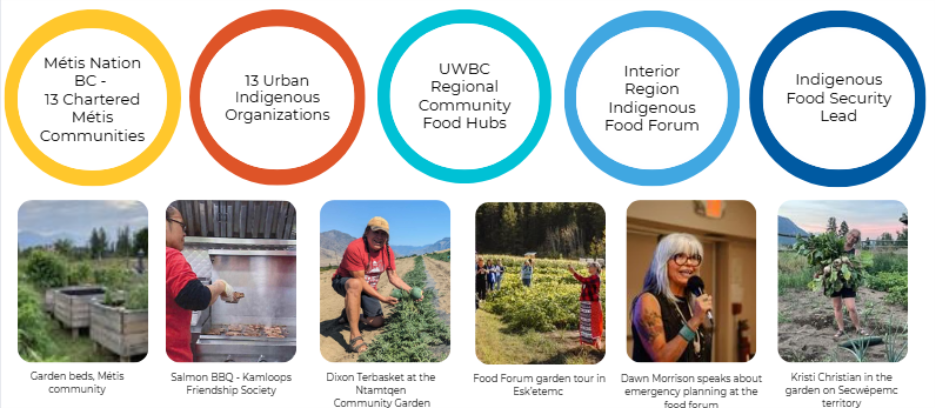Breadcrumb
Nutrition & Food Security
View food security and nutrition information to help promote lifelong health.

Eating well and taking a daily multivitamin gives you the nutrients you need to feel your best, and it gives your baby the nutrients needed to grow and develop.
Health Canada recommends that all women who could become pregnant, and those who are pregnant or breastfeeding, take a multivitamin containing 400 micrograms of folic acid. In addition, pregnant women need to ensure that their multivitamin contains between 16-20 mg of iron.
Enjoy regular meals and snacks throughout the day following guidance from Canada’s Food Guide. Starting in the second trimester you will need to a little extra food each day such as an extra snack or a small meal. Let your appetite be your guide.
Healthy eating for pregnancy
See HealthLink BC's Pregnancy Page to learn about nutritious food choices, sources of key nutrients such as iron, folate, and omega 3 fats, vegetarian eating, healthy weight gain, food safety, and more.
Special considerations
- Nausea and vomiting and other pregnancy discomforts
- Healthy eating guidelines for women with gestational diabetes (handout)
Dietitian services at 8-1-1
Dial 8-1-1 and ask to speak to a registered dietitian.
- Dietitians are available Monday to Friday, 9 a.m. to 5 p.m., to answer your questions about pregnancy and preconception nutrition.
- This service can also help you find an outpatient dietitian or private practice dietitian near you.
Other resources
- Healthy From the Start is a one stop shop that connects you with services in the community to help have a healthy pregnancy. Register as early in your pregnancy as possible.
- Feeding your Baby
- Your Guide to a Healthy Pregnancy - Public Health Agency of Canada
- Prenatal Nutrition Guidelines for Health Professionals
Healthy eating for infants, toddlers and preschoolers
Breastfeeding gives your baby the best start for optimal growth and is recommended to two years and beyond. Your baby will need a liquid vitamin D supplement (400 IU) if they receive any amount of breastmilk. At around six months of age, your baby will be ready to start solid foods. Include plenty of iron rich foods each day such as meat, chicken, fish, eggs, beans and lentils, tofu, iron fortified infant cereal and thinned peanut butter to support proper growth and development.
How you feed your baby and young child is just as important as what you feed them. Start family meals early, role model healthy eating, and support your child as they learn to eat and accept new foods at their own pace. Avoid pressuring your child to eat as it can slow down this learning.
Visit HealthlinkBC, Healthy Eating for Infants and Toddlers for information on:
- Infant feeding
- Baby's first foods
- Feeding your toddler
- Allergy and food safety information
Handouts are available in up to eight languages.
Additional resources
- Feeding Your Baby
- Vitamin D for Babies and Toddlers
- Vitamin D and Your Health - HealthLink BC
- Feeding Young Children
- The Benefits of Eating Together for Children and Families
- Vegetable and Fruit Tips
- Pack and Go Lunches
- Pack and Go Snacks
- Canada’s Food Guide Resources (Age 2 +)
- Reducing Choking Hazards - Toddlers First Steps
Community partners
- Resources for Childcare Providers: Click on the Healthy Eating in Child Care expandable text in the Healthy Eating in Community Settings section of this page,
Dietitian counselling services
Call 8-1-1 to:
Reach Dietitian Services at HealthLinkBC about feeding your baby or young child: a food allergy expert is available
Breastfeeding* is a human right protected by the BC Human Rights Code. Businesses, organizations and local governments can support breastfeeding by offering comfortable, welcoming and accessible spaces for parents to feed their child when away from home. Developing a policy and educating staff are other important steps for success.
Businesses, Workplaces and Facilities:
- See these tips to make your business breastfeeding-friendly.
- This infographic outlines how to create a lactation-friendly space in your workplace.
- Use these posters to let people know breastfeeding or chestfeeding is welcome.
Local Governments:
Breastfeeding-Friendly Public Spaces Toolkit for Local Governments
* Some parents may prefer to use the words nursing, chestfeeding, or human milk feeding.
Healthy eating in community settings
Students spend more time in school than in almost any other environment. Having access to nutritious food at school and the opportunity to engage in positive food experiences helps students develop positive eating attitudes, behaviours and skills that support lifelong well-being.
Opportunities to learn about, prepare and eat food with others contributes to the enjoyment of eating and lifelong healthy eating habits.
School food programs
Students do best when they have positive role models, and when foods offered are in line with healthy eating messages. School food programs can improve access to nutritious foods at school, build food skills, and connect students to their local food systems. Providing positive exposures to growing, preparing, and eating food improves food literacy and has a lasting impact on physical and mental health.
School food program resources:
- BC School Food Toolkit
- Talking Tips for School Food Providers
- The Coalition for Healthy School Food BC
- Feed BC resource K-12 schools
Teaching about food and nutrition
Students benefit from many opportunities to build their comfort and skills with food at school, in a pressure-free environment. The following resources provide educators with tips, resources, and lesson plans for providing positive, student-centered food and nutrition education that aligns with the B.C. curriculum
- Teach Food First: An Educators Toolkit for Exploring Canada’s Food Guide
- Hands on Food
- Educational resources (K-12) (BC Agriculture in the Classroom)
- Interactive grow BC map (all ages)
- Food and nutrition education in the classroom (grades 8-12) (BC Dairy Association)
- Harvest Bin Project (BC Agriculture in the Classroom)
- Spuds in Tubs (BC Agriculture in the Classroom)
- Nurturing Healthy Eaters in the classroom
Popular school food initiatives
The following programs are examples of provincial or regional food-based programs and resources available to schools in B.C. and/or the Interior Health region
- Fresh for Kids (formerly called BC Fruit and Vegetable Nutrition Program)
- Farm to School BC
Body image
Resources to create school environments where all bodies feel welcome and valued.
- Being Me Being Us - Creating a school community where every body belongs
- Weight Bias and Stigma in Schools
- Promoting Positive Body Image -A resource for educators
- Embody- Promoting positive body image: Resources for educators
Healthy fundraising for schools
Consider non-food fundraiser options or food fundraisers that align with healthy eating messages
- Fresh To You Fundraiser (BC Agriculture in the Classroom)
- Fundraising and Events (BC School Food Toolkit)
Resources for families
Positive early experiences with food enhance child development and promote lifelong healthy eating habits. Child care providers play a key role in supporting and creating these experiences. Food is always an important part of the daycare experience, whether you provide food or it is brought from home. If you are unsure what kinds of food you can offer, check with your licensing officer.
See Appetite to Play to access resources and training to help you promote healthy eating and physical activity in early learning settings. Find information on topics like menu planning, recipes, avoiding food battles, supporting parents to send healthy food and developing a nutrition policy.
Fact sheets for child care providers and parents:
- Fostering Healthy Eating Habits in Your Child Care Facility
- Boost Nutrition in Your Menu
- Pack and Go Snacks
- Pack and Go Lunches
Training for child care providers
- Appetite to Play – Access online and in person training to support healthy eating, physical activity, food and physical literacy
Food activities, cooking and gardening
Other related resources and links:
- Eating Well with Canada's Food Guide
- Preventing Choking in Babies and Young Children: For Child Care Providers – HealthLink BC
- Infants and Children Nutrition - Interior Health
- Dietitian Services at HealthLink BC - email or speak with a registered dietitian
Healthy eating in the workplace is a key component of workplace wellness. Healthy employees are happier, produce better quality work, and have better attendance rates. There are many ways to create a supportive healthy eating environment.
Healthy Eating at Work - Canada's Food Guide offers ideas on how to eat well at work and create a work environment that supports healthy eating habits.
Eat Smart Meet Smart provides resources to assist meeting organizers with ideas and guidelines for providing food at meetings and conferences. The resource includes information on how to accommodate allergies and other dietary requirements.
Public buildings in BC, including health facilities, BC government facilities and universities/colleges must ensure that foods offered in vending machines meet the Nutritional Guidelines for Vending Machines in BC Public Buildings.
Food security
Food security means that:
- everyone can get food that is affordable, healthy, safe, and reflects their culture
- everyone has a voice in how food is grown, shared, and managed
- food systems can withstand shocks and disturbances, are fair and good for the environment, and respect Indigenous food sovereignty
Food insecurity means that:
- people can’t get enough healthy food because of factors outside their control
- barriers like low income, where someone lives, or social and environmental conditions limit access to food
- some groups are affected more, especially those experiencing discrimination or the ongoing impacts of colonialism
Food security and food insecurity are often seen as opposites, but it’s more complicated than that. Research shows that food insecurity can still exist even when food security is present.
Indigenous food sovereignty is a key part of understanding and addressing food security and food insecurity. It isn’t defined here because Indigenous partners have shared that no single definition can fully explain it. Instead, it needs to be talked about through actions and systems change.
How we support food security
The Healthy Eating and Food Security team applies a healthy equity and anti-racism approach to their work.
Many things that affect our health—like food security—are influenced by areas outside the health system. That’s why public health teams work together with partners outside the health system.
Local governments influence food security by shaping the policies, spaces, and partnerships that make healthy, affordable, and culturally meaningful food more accessible in their communities. The Healthy Eating and Food Security team brings evidence to local government to develop healthy public policy and plans.
The Healthy Eating and Food Security Team supports people, organizations and local leaders to come together and act on food security. This looks like participating in food policy council in municipalities and learning circles in First Nation communities.
The Healthy Eating and Food Security team collaborates with other Health Authorities, Ministry of Health, BCCDC and FNHA to support province wide action. An example is the Food Costs and Climate Change Impact Stories from Remote BC Communities.
Community Food Action Initiative
The Community Food Action Initiative (CFAI) is a health promotion initiative that aims to increase community food security for all British Columbians. CFAI encourages community involvement, community-led decision-making and partnerships.
Click to enlarge image.
In the IH region, the Healthy Eating and Food Security program deliver the CFAI funding and have prioritized rural, remote and Indigenous communities to receive or benefit from the funding.


The holidays season offers opportunities to drink alcohol, and it can be easy to overindulge. Get tips on how you can drink less - and live more.
/stories/holiday-spirit-tips-drinking-moderation-season


With the support of her mentors and coworkers, Niomi Wright found her true health-care calling as a care aide at Mountain View Lodge in Lillooet.
/stories/we-are-ih-care-aide-recognizes-value-mentors-and-colleagues


This holiday season, let's keep the roads safe for everyone. Give yourself and others the gift of peace of mind and don’t drive high. Here's why.
/stories/four-myths-about-driving-high-why-driving-and-cannabis-dont-mix


Patients like Tim, who spent 8 months at Kelowna Hospital, can now safely continue their care at home with daily visits, remote monitoring and virtual care.
/stories/hospital-home-making-difference-patients-lives


Naomi Jensen, Executive Director, Quality & Patient Safety, leads with purpose to drive safer, more inclusive care and inspire teams to create lasting change.
/stories/we-are-ih-executive-director-driving-safer-care


In December, transplant recipients give back to the health-care staff who see the tragic side of organ donation so they can meet people whose lives were saved.
/stories/operation-popcorn-moment-healing-transplant-recipients
STAY CONNECTED
Receive news, alerts, public service announcements and articles right to your inbox.


